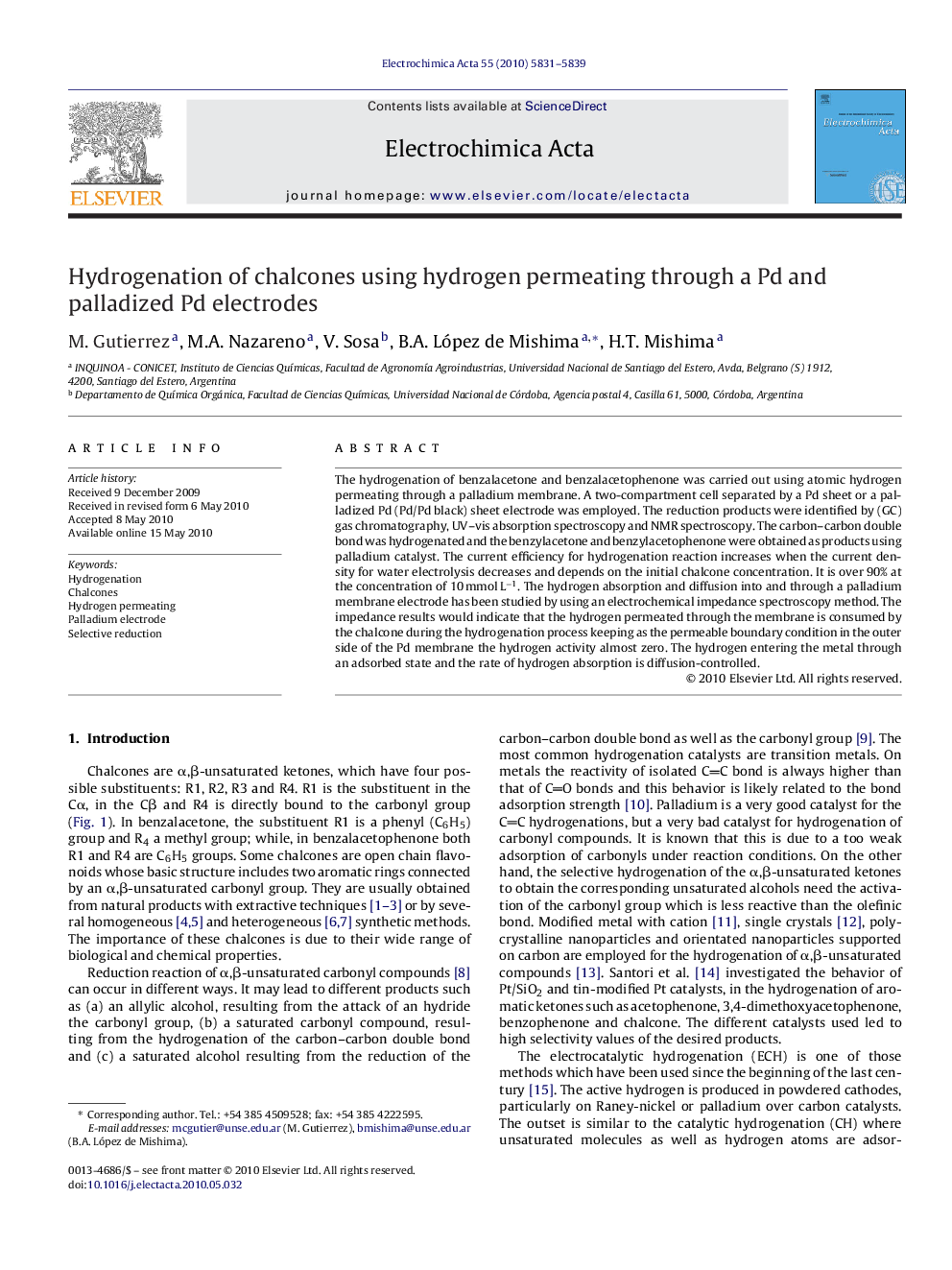| Article ID | Journal | Published Year | Pages | File Type |
|---|---|---|---|---|
| 191135 | Electrochimica Acta | 2010 | 9 Pages |
The hydrogenation of benzalacetone and benzalacetophenone was carried out using atomic hydrogen permeating through a palladium membrane. A two-compartment cell separated by a Pd sheet or a palladized Pd (Pd/Pd black) sheet electrode was employed. The reduction products were identified by (GC) gas chromatography, UV–vis absorption spectroscopy and NMR spectroscopy. The carbon–carbon double bond was hydrogenated and the benzylacetone and benzylacetophenone were obtained as products using palladium catalyst. The current efficiency for hydrogenation reaction increases when the current density for water electrolysis decreases and depends on the initial chalcone concentration. It is over 90% at the concentration of 10 mmol L−1. The hydrogen absorption and diffusion into and through a palladium membrane electrode has been studied by using an electrochemical impedance spectroscopy method. The impedance results would indicate that the hydrogen permeated through the membrane is consumed by the chalcone during the hydrogenation process keeping as the permeable boundary condition in the outer side of the Pd membrane the hydrogen activity almost zero. The hydrogen entering the metal through an adsorbed state and the rate of hydrogen absorption is diffusion-controlled.
